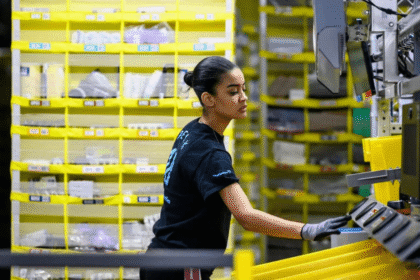Recent data from the General Authority for Statistics has highlighted a significant decline in unemployment among Saudi citizens, dropping to 7.1% in the second quarter of 2024. This figure marks an improvement from 7.6% in the previous quarter and 8.5% during the same period a year earlier. Such statistics reflect the ongoing efforts by the Saudi government to enhance employment opportunities, particularly among its youth, while also addressing broader economic challenges. The overall unemployment rate, including expatriate workers, has also seen a reduction, standing at 3.3%, down from 4.1% in the previous year.
Understanding Unemployment Dynamics
Unemployment rates serve as crucial indicators of economic health, influencing public policy and business strategies. In Saudi Arabia, the labour market is particularly dynamic due to a rapidly growing youth population. Over 60% of Saudi citizens are under the age of 30, which creates both opportunities and challenges for the economy. The government’s commitment to reducing unemployment is part of its broader Vision 2030 initiative, which aims to diversify the economy and reduce dependence on oil.
The Vision 2030 program emphasizes job creation in the private sector as a vital component of economic reform. As the Kingdom seeks to transition from a state-led economy to a more market-oriented one, the private sector’s role in job creation has become increasingly critical. With 95.5% of unemployed Saudi citizens expressing a willingness to accept job offers in this sector, there is a clear indication of readiness to engage with the evolving job landscape.
Labour Market Trends
The decline in unemployment rates can be attributed to several factors. The Saudi government has implemented various labour market reforms aimed at stimulating job creation and enhancing the skills of the workforce. These reforms include the introduction of vocational training programs, internships, and partnerships with the private sector to create job opportunities tailored to the skills of the local population.
Moreover, the ongoing economic diversification efforts have led to growth in sectors such as technology, tourism, and renewable energy. These industries are expected to require a skilled workforce, thereby providing more job opportunities for Saudi citizens. The introduction of initiatives such as the National Industrial Development and Logistics Program further exemplifies the government’s strategy to boost employment in high-potential sectors.
Women’s Employment: A Positive Shift
A noteworthy aspect of the current labour market dynamics is the increase in female participation. Female unemployment in Saudi Arabia has decreased to 12.8% in Q2 2024, down from 14.2% in the first quarter. This decline is largely attributed to the government’s commitment to increasing women’s participation in the workforce, aligned with Vision 2030 objectives.
Saudi Arabia has implemented several reforms to enhance women’s roles in the economy, including the easing of restrictions on female employment and the promotion of women in leadership positions. As a result, the female labour market participation rate has surpassed the 30% target set for 2030, reaching 35.4% in Q2 2024. This achievement represents a significant milestone in the Kingdom’s efforts to empower women and harness their potential as economic contributors.
The positive changes in female employment are further supported by increased educational opportunities for women, leading to a more qualified and competitive female workforce. Programs aimed at promoting STEM (Science, Technology, Engineering, and Mathematics) education among girls have gained traction, preparing them for roles in growing sectors that require specialized skills.
Challenges in Labour Force Participation
Despite the positive trends, the overall labour force participation rate among Saudi citizens remains a concern. The participation rate has struggled to rise significantly above the 50% mark, standing at 50.8% in Q2 2024. This stagnation indicates that while unemployment rates are decreasing, many citizens may still face barriers to entering the workforce.
Barriers to employment can include cultural attitudes towards work, particularly for women, as well as the mismatch between the skills offered by graduates and the demands of the job market. The current education system in Saudi Arabia is also undergoing reforms to align more closely with market needs, but challenges remain in ensuring that young people are equipped with the necessary skills and competencies.
Insights from the International Monetary Fund (IMF)
The International Monetary Fund (IMF) has recently highlighted the need for further labour market reforms in Saudi Arabia. While the current reforms are addressing the demand for skilled workers, the IMF stresses that more needs to be done to increase overall labour force participation and reduce wage gaps. Wage disparities, particularly between men and women, continue to be an issue that the government must address to create a more equitable workforce.
Moreover, the IMF suggests that fostering a culture of entrepreneurship among Saudi citizens could play a crucial role in stimulating job creation. Encouraging self-employment and small business development could not only enhance employment rates but also diversify the economy by creating new market opportunities.
Government Initiatives and Economic Diversification
The Saudi government has launched several initiatives to support economic diversification and job creation. Programs under Vision 2030 focus on enhancing the business environment, reducing bureaucratic hurdles, and providing financial support for start-ups and small businesses. These efforts are aimed at attracting local and foreign investments, which are critical for economic growth.
One such initiative is the “Green Saudi Arabia” program, which focuses on promoting environmental sustainability and creating green jobs in renewable energy and conservation. The program aims to prepare the workforce for the transition to a sustainable economy, generating employment opportunities in sectors that are expected to grow in the coming years.
The government has also prioritized the development of the tourism sector, which is anticipated to create numerous jobs across various skill levels. With the easing of travel restrictions and the introduction of new visa options for tourists, Saudi Arabia is poised to become a more prominent destination for international visitors. This shift is expected to lead to an increase in hospitality and service-related jobs.
The Role of Education and Training
Education and training are pivotal in addressing the skills gap in the Saudi labour market. The government has recognized the need for an education system that aligns with the demands of the economy. Reforms are being implemented to enhance vocational training programs and improve the quality of higher education.
Collaboration between educational institutions and the private sector is essential for developing curricula that reflect industry needs. By fostering partnerships, the government aims to ensure that graduates possess the relevant skills required by employers, thereby reducing unemployment rates and improving overall labour force participation.
The Future Outlook
As Saudi Arabia continues to navigate the complexities of economic diversification and job creation, the outlook remains cautiously optimistic. The decline in unemployment rates, particularly among youth and women, is a positive indicator of the effectiveness of government initiatives. However, sustained efforts are necessary to address existing barriers to workforce participation and ensure that job creation keeps pace with the growing population.
The ongoing reforms and initiatives under Vision 2030 are designed to transform the Saudi economy into a more sustainable and diverse entity. As these changes take effect, it will be crucial for stakeholders, including the government, private sector, and educational institutions, to collaborate effectively in shaping a robust labour market that benefits all citizens.
The recent decrease in unemployment in Saudi Arabia to 7.1% is a significant development that reflects ongoing economic reforms and a commitment to job creation. With a youthful population eager to engage in the labour market, the Kingdom stands at a critical juncture. The initiatives under Vision 2030, coupled with increased participation of women and the focus on education and training, will play a vital role in shaping the future of the Saudi labour market.
As the government continues to implement reforms and address challenges, the path toward a diversified and sustainable economy becomes clearer. The journey is far from complete, but the foundation for a prosperous future is being laid, driven by the resilience and determination of the Saudi people.
#SaudiArabia #Unemployment #LabourMarket #Vision2030 #WomenEmpowerment #YouthEmployment #EconomicDiversification #JobCreation #VocationalTraining #IMFReport







